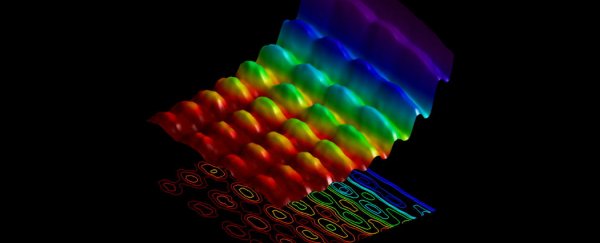For the first time, scientists have managed to capture the dual natures of light - particle and wave - in a single electron microscope image.
Until now, scientists have only ever been able to capture an image of light as either a particle or a wave, and never both at the same time. But a team from the École Polytechnique Fédérale de Lausanne in Switzerland have managed to overcome the obstacles that stood in the way of previous experiments by using electrons to image light in this very strange state.
The key to their success is their unusual experiment design. First they fire a pulse of laser light at a single strand of nanowire suspended on a piece of graphene film. This causes the nanowire to vibrate, and light particles - or photons - are sent travelling along it in two possible directions. When light particles that are travelling on opposite directions meet and overlap on the wire, they form a wave. Known as a 'standing wave', this state creates light that radiates around the nanowire.
So far so good, but that's not going to give you an image of the two light states. The scientists figured that out by feeding a stream of electrons into the area nearby the nanowire, they could force an interaction between the electrons and the light that had been confined on the nanowire.
This interaction caused the electrons to either speed up or slow down, and the team used an ultrafast electron microscope to capture this exact moment, so they could visualise the standing wave, "which acts as a fingerprint of the wave-nature of light," the press release explains. Publishing their results in Nature Communications, the team discusses how this collision between the photons and electrons and the consequential speed-change experienced by the electrons appears as an exchange of energy, which can be visualised by the microscope.
So the top part of the image is the standing wave, while the bottom shows where the photons are located.
"This experiment demonstrates that, for the first time ever, we can film quantum mechanics - and its paradoxical nature - directly," one of the team, physicist Fabrizio Carbone, said in a press release. "Being able to image and control quantum phenomena at the nanometer scale like this opens up a new route towards quantum computing."
The team in Switzerland has put together an adorable little video explaining their experiment. Just imagine if every time light appeared in particle form it actually made those weird little noises. What an utter nightmare.
